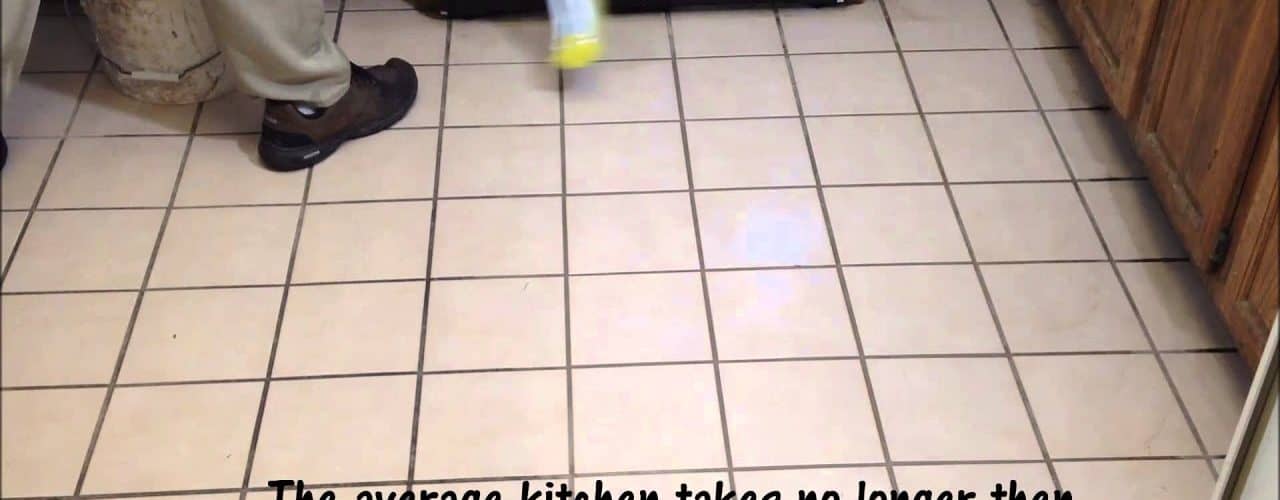Once a reader has put in new bathroom tiles and grout, it is easy to look at the beautiful new floor and feel like you have done enough. After all, you did use specially enhanced grout which contains additives to keep down mildew build up. Is it really necessary to go through all the time and effort required to seal up the grout, too? Unfortunately, the answer is always a resounding yes. In sealing up grout, you will stop dirt from getting into the grout lines. Even should your grout have additives inside that battle off mildew, you will see that a sealer gives the extra benefits of protecting the grout against any potential mold or mildew formation. More importantly, sealing up grout will literally prolong its natural life. The truth is that sealing up new grout proves to be a swift and simple job to do, too. This article goes through the step by step directions for sealing up grout.
Contents
The Two Types of Grout Sealers
Two types of grout sealers exist, Membrane forming and penetrating grout sealers. Membrane Forming sealers have the following characteristics:
- They are most effectively utilized on floors, as opposed to on baths or showers, for several reasons. The majority of showers and baths employ glaze tiles which resist the penetration of moisture. Floor tiles are typically not glazed. Membrane Forming sealers do not adhere effectively to glazed tiles.
- Membrane forming sealers form a coating on the groat’s surface. Such membranes typically have pigments inside them which permit you to alter the existing grout’s color, even though they are primarily intended to stop water from penetrating.
- Membrane Forming sealers are ineffective in areas of high moisture, such as a shower or tub. In fact, they can have the opposite effect of that which is intended. Should water soak in to a grout, the sealer will stop this moisture from evaporating away. Such moisture trapped beneath the sealer will actually encourage the creation of mildew and mold.
Penetrating sealers have the following characteristics:
- They work using a water base or mineral spirit base with little particles that penetrate directly into the grout’s granular structure. This liquid absorbs right into the porous surface of the grout. Once the base evaporates away, the latex and silicon, which are water resistant particles, stay inside of the grout, filling in little holes and preventing moisture from getting inside.
- Where showers and baths are concerned, only penetrating sealers should ever be utilized.
Before You Begin the Project
It is very important when you are ready to seal your new grout, that you allow it a sufficient quantity of time to dry. The majority of manufacturers of tile grout suggest a full twenty-four to forty-eight hours minimally. Every sealer product is a little bit different from the next. This makes it critically important to carefully study the instructions on the packaging of the product which you select and buy.
Applying the Grout Sealer
In the majority of cases, the application process involves applying from one to three different sealer coats.You begin by putting on the first coat. Allow it an hour to dry. Then apply a second coat. Again, you will want to wait a full hour before repeating.
You should apply the sealer utilizing a smaller paintbrush or application bottle which has an applicator wheel atop that you just roll on along the grout line itself. Make certain that you have a cloth nearby in case you need to wipe away any sealer which might find its way into your tiles. You have to do this before it dries there. When left on tiles, sealer dries in a haze which is practically impossible to get off of them.
Once the sealer has been given sufficient time to set, make sure that it is working. You can accomplish this by applying a few tiny drops of water on the grout line itself. If the grout is working properly, then the water will bead up.
Maintaining Your Grout Sealer’s Effectiveness
Given enough time, grout sealer, like all things, unfortunately loses its potency. You can maintain clean, mildew free grout over years, though. All that is necessary is to put down some new sealer, once each two to three years.
Additional Information:



